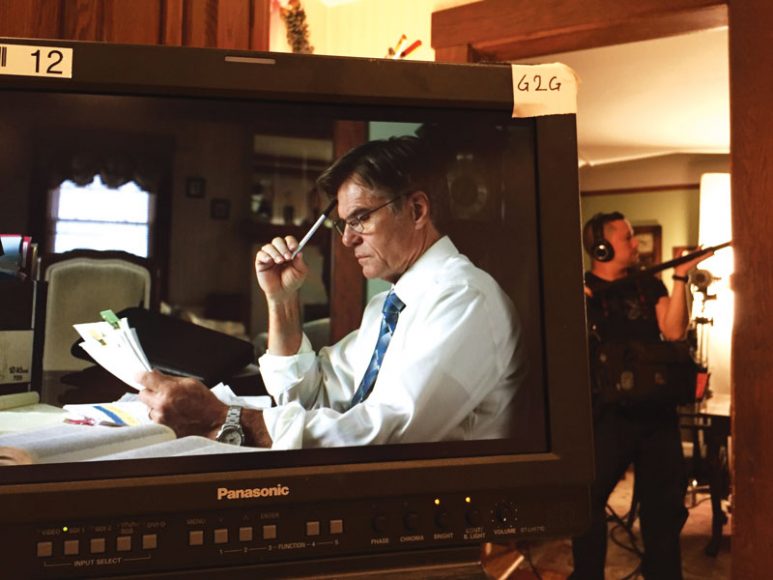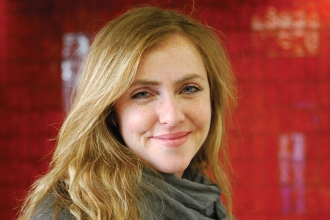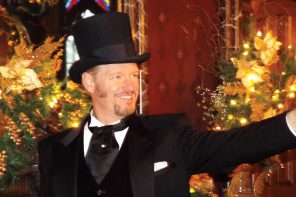When film director William Dickerson was growing up in Yonkers, he learned that life doesn’t always follow a script. So, he wrote one.
“This is the movie I always wanted to make,” he says of his coming-of-age film, “No Alternative,” which made its East Coast debut at Yonkers Film Festival (YoFiFest) in November.
To shoot the film, Dickerson had to return from Los Angeles with actor Harry Hamlin in tow, turn his parents’ dining room in Colonial Heights into a production office, filling his friend’s house with a bustling film crew and setting about Westchester County to capture the backdrop of his teen years circa 1994.
Dickerson’s characters — loosely based on his childhood friends — hang out in Bronxville, on Central Avenue and at Asbury Church in Crestwood overlooking the Bronx River Parkway.
“We scouted a few locations for schools,” says Dickerson, who attended St. Joseph School in Bronxville and Fordham Prep in the Bronx but, for the movie, shot at Riverside High School on Warburton Avenue. “The location is breathtaking,” he says, “with great views down the (Hudson) river.” He also shot at the Bronxville Boy Scout Cabin, The Capitol Theatre in Port Chester and at a recording studio in Bridgeport.
The screenplay for “No Alternative” was adapted from Dickerson’s 2012 novel of the same name and deals with themes of mental illness, addiction and suicide. It is a music-driven film rooted in the early ’90s when the alternative rock counterculture spread east from a garage in Seattle.
In the aftermath of Nirvana frontman Kurt Cobain’s suicide, angst-y teens like Dickerson formed fledgling garage bands and the Grunge era took off. “I was 15 years old when I picked up a guitar.”
But Cobain’s death had another, more sinister effect. Suicide shot to the forefront of public consciousness. That’s where Dickerson’s story begins.
The specter of suicide hangs over several of his characters. High school senior Thomas Harrison (played by Conor Proft) forms garage band Latterday Saints. “The band is loosely based on my band,” Dickerson says. “And the songs are our songs from 20 years ago.”
Thomas’ sister, Bridget (played by Michaela Cavazos), bucks against the garage-band trend and does something true to the real spirit of punk. “She embarks on this amateur rap career,” Dickerson says.
Bridget creates a persona of a local male gangster rapper, Bri Da B, and takes her show on the open mic circuit to places like Slave to The Grind in Bronxville. The character is based loosely on Dickerson’s own sister, Briana, who assumed the same persona. “My sister is compelling,” Dickerson says.
In the film, Bri Da B takes the stage at Slave to the Grind armed with a tinny sounding synthesizer then rhymes and swears her way to mixed response. Her act was both a form of rebellion and — what Dickerson knows now — an outlet for her troubled mind. “To recreate those scenes was emotionally trying,” he says. “It’s like a wound I willingly kept open.”
For the film, he says he wanted to shoot at the actual coffee shop but “the (village) of Bronxville wouldn’t allow it.” So, those scenes were shot in a Brooklyn loft. The owners of the coffee shop let them use their merchandise anyway. “We still call it Slave to the Grind. That’s where I used to hang out and where my sister hung out.”
Dickerson’s effort to destigmatize mental illness is at the root of many of his choices for the film.
He purposefully didn’t give the character of Bridget a diagnosis. “In a more traditional movie they’ll say ‘this is the mental illness the character is suffering from,’ but the way it works with most people is that it takes a long time to be characterized as that illness,” he says. Dickerson’s own sister went 10 years without a proper diagnosis.
It is unclear in the film what part of Bridget is genius and what needs serious help. Dickerson wanted to portray how difficult it can be for family and friends to recognize the line between a nonconformity they admire and full-blown mental illness.
In another scene, one of the characters commits suicide but the motivation is not clear. “That’s how mental illness occurs in reality,” Dickerson says. “To think that every suicide adheres to the same fashion is wrong. Your mind demands an answer and a reason but you’ll never get that reason.”
When Dickerson wrote the book on which the film is based, he was trying to communicate the torture his family endured from his sister’s repeated suicide attempts. “I wanted to show her through this story (of) how suicide could affect a family.” She died two years after the book was published.
Hamlin (“Mad Men,” “L.A. Law”) plays the father in the film, a character loosely based on Dickerson’s own father. The real Thomas Dickerson was a Yonkers stalwart who served in city, county and state government in various posts during a critical time for Yonkers in the 1980s.
Most famously, he helped force compliance to a court order in favor of desegregation. It was a hard-fought battle for the city, depicted in HBO’s “Show Me a Hero.”
“I made the father more stern,” Dickerson says. “As teenagers, we begin to view our parents as the enemy.”
At some point, though, children grow up and former adversaries become friends. “My father loved the whole process so he was thrilled to be a part of the behind the scenes and he was very excited Harry Hamlin was playing him in the movie.”
At their family home in Colonial Heights, “Harry would sit where my dad sat (at the dinner table). I would sit in my chair,” Dickerson says.
Thomas Dickerson passed away in July and never saw the completed version. But he did see the trailer. “I wanted him to see it on the big screen,” Dickerson says. “So, I kept encouraging him to wait.”
YoFiFest was a full-circle moment for Dickerson, who finally got to show the indie film on the big screen in his hometown. “It’s like home-court advantage in a way. But also, extremely nerve-racking.”
“Shooting in Yonkers was a great experience. Mayor (Mike) Spano really helped shepherd this film.”
“It’s a mountain that I had to climb …and I climbed it.”






